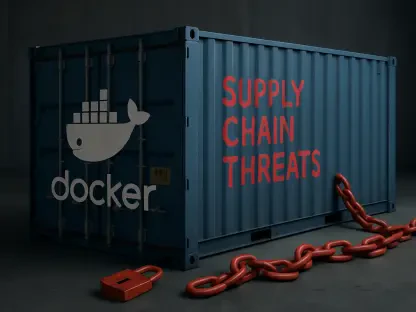Imagine a world where robots seamlessly navigate complex environments, learning from real-world interactions to perform tasks in manufacturing plants, hospitals, and even homes, while transforming industries with cutting-edge technology. This vision is becoming reality as two tech giants join forces to revolutionize the AI robotics landscape. The collaboration between Alibaba, a powerhouse in cloud computing, and Nvidia, a leader in AI and graphics processing, marks a pivotal moment for the industry. By integrating cutting-edge AI tools into cloud platforms, this partnership promises to accelerate innovation in autonomous systems and intelligent machines. This report delves into the significance of their alliance, explores the broader context of AI robotics and cloud computing, and examines the challenges and opportunities shaping this dynamic sector.
Overview of the AI Robotics and Cloud Computing Landscape
The AI robotics industry stands at the forefront of technological advancement, with applications spanning autonomous vehicles, industrial automation, and personal assistance devices. These systems rely on sophisticated algorithms to perceive, adapt, and interact with their surroundings, driving demand for powerful computational resources. Cloud computing has emerged as a critical enabler, offering scalable infrastructure to process vast datasets and train complex AI models without the limitations of on-device hardware. This synergy between AI robotics and cloud platforms is transforming industries by making advanced technology accessible to developers and businesses of all sizes.
Major players like Alibaba and Nvidia are shaping this ecosystem with their complementary strengths. Alibaba Cloud dominates the Chinese market, providing robust infrastructure for AI-driven solutions, while Nvidia excels in developing high-performance GPUs and AI toolkits essential for robotics. Globally, the sector is influenced by rapid advancements in machine learning, increasing investments in automation, and a growing emphasis on digital transformation across industries. As competition intensifies, strategic partnerships are becoming vital to address the technical and economic challenges of scaling AI robotics solutions.
The convergence of these technologies is also fueled by rising market demand for efficiency and innovation. From logistics companies seeking automated warehousing to automotive manufacturers developing self-driving cars, the need for reliable, cloud-supported AI systems is evident. This landscape sets the stage for collaborations that can push boundaries, offering a glimpse into how integrated platforms might redefine operational capabilities across diverse sectors.
Significance of the Alibaba-Nvidia Collaboration
Strategic Integration of Embodied AI Tools
At the heart of this partnership lies the integration of Nvidia’s embodied AI toolkit into Alibaba Cloud’s machine learning platform. These tools focus on enabling AI systems to interact with physical environments through advanced data processing and real-world reinforcement learning. Developers gain access to resources that facilitate the creation of robots and autonomous vehicles capable of adapting to dynamic, human-centric settings, marking a significant leap in practical AI application.
This collaboration empowers a wide range of industries by simplifying the development process. For instance, robotics firms can leverage these cloud-based tools to simulate and refine algorithms without investing in prohibitively expensive hardware. Similarly, autonomous vehicle developers benefit from streamlined model training, enhancing safety and performance in real-world scenarios. The accessibility of such technology through Alibaba’s cloud infrastructure democratizes innovation, potentially accelerating the adoption of intelligent systems.
The strategic alignment also underscores a shared vision of advancing embodied AI, where machines not only compute but also act within physical spaces. By combining Nvidia’s expertise in AI hardware and software with Alibaba’s expansive cloud network, the partnership creates a robust ecosystem for developers. This integration is poised to redefine how industries approach automation challenges, fostering solutions that are both scalable and efficient.
Market Implications and Growth Potential
The market impact of this alliance is substantial, particularly in the context of AI robotics adoption. Industry projections suggest that the global market for cloud-based AI solutions could see double-digit growth annually from now through 2027, with China positioned as a key growth driver due to its massive industrial base and tech-savvy economy. This partnership taps into that potential, offering tools that cater to high-demand sectors like manufacturing, logistics, and transportation.
In China alone, the push for automation in manufacturing is expected to create significant opportunities for cloud-supported robotics. Analysts anticipate that collaborations like this one could catalyze innovation, reducing development costs and timelines for local firms. Globally, the alliance strengthens the competitive positioning of both companies, potentially influencing how other tech giants approach similar integrations in their quest for market share.
Looking ahead, the growth trajectory appears promising as industries increasingly recognize the value of AI-driven automation. The partnership may inspire new use cases, from smart factories to urban mobility solutions, while contributing to economic efficiencies on a broad scale. Stakeholders are likely to monitor how this collaboration influences market dynamics, especially in regions prioritizing technological self-sufficiency.
Challenges in the AI Robotics and Cloud Ecosystem
The path to seamless growth in AI robotics and cloud integration is fraught with obstacles that this partnership must navigate. Technologically, integrating complex AI systems into cloud environments poses challenges related to latency, data security, and system interoperability. Ensuring that real-time robotics applications function reliably over cloud networks requires overcoming significant hurdles in infrastructure design and optimization.
Geopolitical tensions further complicate the landscape, particularly between the US and China, where export restrictions on advanced technology can disrupt supply chains and collaboration. Nvidia, as a US-based firm, faces scrutiny over sharing cutting-edge tools, while Alibaba must balance reliance on foreign technology with national priorities for domestic innovation. These constraints could limit the scope of their joint efforts if not addressed through diplomatic or alternative sourcing strategies.
Competitive pressures also loom large, with domestic chipmakers in China striving to close the performance gap with global leaders like Nvidia. While current partnerships prioritize access to the best available technology, the long-term viability of such alliances may depend on fostering local capabilities. Mitigating these challenges will require both companies to invest in adaptive strategies, such as hybrid solutions that blend global and local resources, to sustain momentum in this rapidly evolving field.
Regulatory Dynamics and Compliance in China’s Tech Sector
China’s regulatory environment plays a critical role in shaping the trajectory of tech collaborations like this one. The government’s approach often involves a delicate balance between supporting domestic technology firms and ensuring access to global innovations that drive progress. Policies aimed at data localization and cybersecurity impose strict compliance requirements on foreign partnerships, influencing how data and technology are shared within the country.
Specific regulations affecting foreign tech collaborations include mandates for joint ventures and technology transfer agreements, which can complicate operations for international players. For Alibaba and Nvidia, adherence to these rules is essential to maintain operational continuity and build trust with local authorities. Navigating this framework demands a proactive stance on compliance, ensuring that their cloud and AI solutions align with national standards.
Beyond immediate policies, the broader regulatory trend reflects a growing emphasis on technological sovereignty. While short-term allowances for foreign technology persist, the long-term vision prioritizes self-reliance, potentially reshaping how such partnerships evolve. Both companies must remain agile, adapting to shifting guidelines while advocating for frameworks that support collaborative innovation without compromising strategic goals.
Future Horizons for AI Robotics and Cloud Integration
Looking toward the future, the field of embodied AI is set to witness transformative trends that could redefine its applications. Emerging developments in hardware, such as Nvidia’s Jetson AGX Thor, offer compact yet powerful solutions for robotics across industries like healthcare, agriculture, and retail. These advancements signal a shift toward more versatile, accessible tools that could expand the reach of AI-driven automation.
Market needs are also evolving, with sectors like healthcare demanding robots for patient care and agriculture seeking automated solutions for crop management. Cloud integration will play a pivotal role in meeting these demands by enabling remote updates, data sharing, and scalability. The Alibaba-Nvidia partnership is well-positioned to address these requirements, potentially leading the charge in tailoring solutions for niche but critical applications.
Global economic and regulatory shifts will continue to influence the trajectory of AI robotics. Trade dynamics, investment patterns, and policy changes could either accelerate or hinder progress, depending on how stakeholders respond. As the industry adapts to these external factors, the focus will likely remain on innovation that balances efficiency with ethical considerations, ensuring that the benefits of AI robotics are widely distributed.
Conclusion and Strategic Outlook
Reflecting on the insights gathered, the alliance between Alibaba and Nvidia stands as a landmark effort in advancing AI robotics through cloud integration. This collaboration bridges technological expertise and market reach, setting a benchmark for how strategic partnerships can drive innovation despite complex challenges. The integration of embodied AI tools into scalable platforms marks a turning point for developers and industries alike, highlighting the transformative potential of such synergies.
Moving forward, stakeholders are encouraged to explore investment opportunities in cloud-based AI solutions, particularly in high-growth sectors like logistics and healthcare. Both companies need to prioritize adaptive strategies to address regulatory and competitive pressures, potentially through localized innovations or diversified partnerships. Additionally, a focus on ethical AI development is deemed essential to ensure trust and sustainability in deployment.
The broader industry is urged to consider collaborative models that balance global expertise with regional priorities, fostering an ecosystem where technology serves diverse needs. By building on the foundation laid by this partnership, future efforts can unlock new dimensions of automation, paving the way for a more connected and intelligent world.









